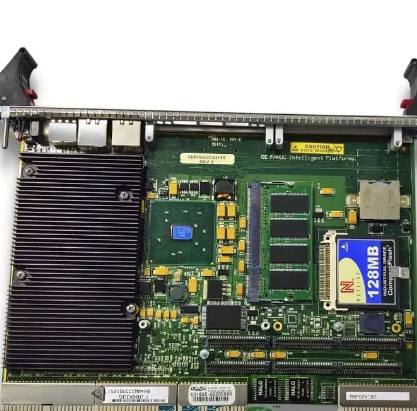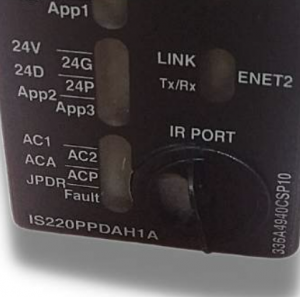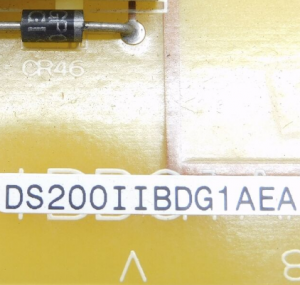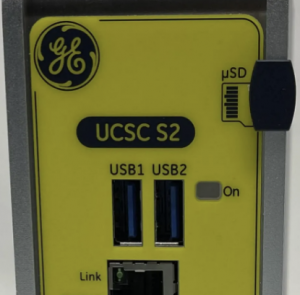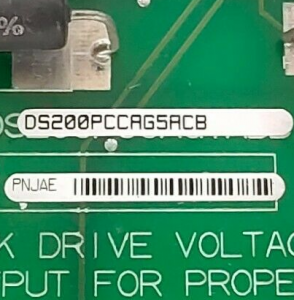GE IS415UCCCH4A Single Slot Controller Board
Description
| Manufacture | GE |
| Model | IS415UCCCH4A |
| Ordering information | IS415UCCCH4A |
| Catalog | Mark Vie |
| Description | GE IS415UCCCH4A Single Slot Controller Board |
| Origin | United States (US) |
| HS Code | 85389091 |
| Dimension | 16cm*16cm*12cm |
| Weight | 0.8kg |
Details
The controller module includes a controller and a four-slot CPCI rack with one or two power supplies, at the very least. The leftmost slot must contain the principal controller (slot 1). A single rack can hold a second, third, and fourth controller. To increase the battery's lifespan while being stored, the CMOS battery is unplugged via a processor board jumper. The battery jumper needs to be reinstalled before inserting the board. For the position of the jumpers, consult the design for the relevant UCCx module. The internal date and real-time clock, as well as the CMOS RAM settings, are all powered by the battery. Since the CMOS settings are set to their appropriate default values by the BIOS, there is no need to change them. The real-time clock alone needs to be reset. Using the ToolboxST program or the system NTP server, the initial time and date can be set.
If the board is the system board (slot 1 board) and there are other boards in the rack, the other boards will stop functioning if the system board is ejected. When replacing any board in the rack, it is advised that power be turned off. You can eliminate rack power using one of the following techniques.
- There is a switch that can be used to turn off the power supply outputs in a single power supply unit.
- To turn off the electricity in a dual power supply device, both power supplies can be removed without risk.
- Unplug the Mate-N-Lok connectors on the bottom of the CPCI enclosure that is used for bulk power input.
The UCCC module contains injectors/ejectors at the bottom and top, unlike Mark VI VME boards which only offered ejectors. The top ejector should be slanted upward, and the bottom ejector should be tilted downward, before sliding the board into the rack. The injectors should be used to fully insert the board once the connector on the rear of the board has made contact with the backplane connector. To accomplish this, pull up on the bottom ejector while pressing down on the top injector. Don't forget to tighten the top and bottom injector/ejector screws to complete the installation. This offers a chassis ground connection and mechanical security.
OPERATION:
The controller has software tailored to its use, such as balance-of-plant (BOP) products, land-marine aero derivatives (LM), steam, and gas, among others. It can move blocks or rungs. The I/O packs and controllers' clocks are synchronized to within 100 microseconds using the IEEE 1588 standard via the R, S, and T IONets. Over the R, S, and T IONets, external data is sent to and received from the controller's control system database.
DUAL SYSTEM:
1. Handle the inputs and outputs for the I/O packets.
2. Values for the internal status and initialization data from the chosen controller
3. Information on the synchronization and status of both controllers.
TRIPLE MODULAR REDUNDANT SYSTEM:
1. Handle the inputs and outputs for the I/O packets.
2. Internal voting state variables, as well as synchronization data from each of the three controllers.
3. Data from the chosen controller regarding initialization.
FUNCTIONAL DESCRIPTION:
IS415UCCCH4A is a Single Slot Controller Board manufactured and designed by General Electric as part of the Mark VIe Series used in Distributed Control Systems. The application code is run by a family of single-board, 6U high, CompactPCI (CPCI) computers called UCCC controllers. Through onboard I/O network interfaces, the controller connects to the I/O packs and mounts inside a CPCI enclosure. QNX Neutrino, a real-time, multitasking OS created for industrial applications requiring high speed and high reliability, serves as the controller operating system (OS). The I/O networks are private, dedicated Ethernet systems that solely support the controllers and I/O packs. The following links to the operator, engineering, and I/O interfaces are provided by five communication ports:
- For communication with HMIs and other control devices, the Unit Data Highway (UDH) requires an Ethernet connection.
- R, S, and T I/O network Ethernet connection
- Setting up with an RS-232C connection through the COM1 port







